murph
Founding Member
- Oct 16, 2025
- 73
- 66
Disclaimer: This post is intended to be a neutral informational on operant conditioning. If you find any errors in this post, please let me know. Thank you.
Operant conditioning as a psychological subject was created by Edward Thorndike. He theorised a “law of effect” that states behaviors are a result of consequences, whether that be rewarding or discomforting.
The meaning of positive and negative
In the context of Operant Conditioning, positive means to add something. Negative means to take something away.
Defining Reinforcement and Punishment
Reinforcement is a consequence that makes a behavior occur more often.
Punishment is a consequence that makes a behavior occur less often.
Quick Recap
Positive and negative refer to whether a stimulus was added or removed.
Reinforcement and punishment refer to the future frequency of the behavior.
Reinforcement describes a consequence that makes a behavior occur more often in the future. Punishment is a consequence that makes a behavior occur less often.
What is shaping behavior?
In the service dog community there is a saying: slow is fast.
This is a reference to shaping behaviors in dogs. Shaping behaviors is the act of reinforcing or punishing approximations of a behavior to achieve the eventual desired behavior.
Operant conditioning shapes voluntary behaviors through their consequences. Actions followed by rewards tend to be repeated, while those followed by negative outcomes diminish.
What is extinction?
Extinction occurs when a previously reinforced behavior is no longer reinforced. During extinction the behavior becomes less probable.
Common training methods use variable rewards to stave off extinction. If the dog does not know when the reinforcement or punishment will come, the behavior is better reinforced than by reinforcing the behavior at every opportunity.
Positive Reinforcement
Positive Reinforcement is possibly the most common and well known method in dog training. It is generally accepted by evidence based dog training as the best way to train a dog.
Examples of Positive Reinforcement:
Because Positive Reinforcement involves adding something that is pleasurable, the are times where this can result in undesirable behaviors.
Examples:
Examples of Positive Punishment
Examples of Negative Reinforcement
Examples of Negative Punishment
This post is a lot longer than I anticipated, so I am going to make this a two parter. My next post will be on Training Styles associated with these training strategies, as well as learning thresholds.
Thanks for reading!
Operant conditioning as a psychological subject was created by Edward Thorndike. He theorised a “law of effect” that states behaviors are a result of consequences, whether that be rewarding or discomforting.
The meaning of positive and negative
In the context of Operant Conditioning, positive means to add something. Negative means to take something away.
Defining Reinforcement and Punishment
Reinforcement is a consequence that makes a behavior occur more often.
Punishment is a consequence that makes a behavior occur less often.
Quick Recap
Positive and negative refer to whether a stimulus was added or removed.
Reinforcement and punishment refer to the future frequency of the behavior.
Reinforcement describes a consequence that makes a behavior occur more often in the future. Punishment is a consequence that makes a behavior occur less often.
What is shaping behavior?
In the service dog community there is a saying: slow is fast.
This is a reference to shaping behaviors in dogs. Shaping behaviors is the act of reinforcing or punishing approximations of a behavior to achieve the eventual desired behavior.
Operant conditioning shapes voluntary behaviors through their consequences. Actions followed by rewards tend to be repeated, while those followed by negative outcomes diminish.
What is extinction?
Extinction occurs when a previously reinforced behavior is no longer reinforced. During extinction the behavior becomes less probable.
Common training methods use variable rewards to stave off extinction. If the dog does not know when the reinforcement or punishment will come, the behavior is better reinforced than by reinforcing the behavior at every opportunity.
Positive Reinforcement
Positive Reinforcement is possibly the most common and well known method in dog training. It is generally accepted by evidence based dog training as the best way to train a dog.
Examples of Positive Reinforcement:
- Giving your dog a treat when they complete a command.
- Giving your dog praise when they potty outside
Because Positive Reinforcement involves adding something that is pleasurable, the are times where this can result in undesirable behaviors.
Examples:
- Your dog jumps on the counter and takes a bite of your lunch. They then learn that by counter surfing, they get food.
- Your dog jumps on a visitor at the dog and the dog is petted or engaged by the visitor. The dog will associate jumping with greeting others.
Examples of Positive Punishment
- Your dog barks inappropriately and you respond with a firm “No.”
- Your dog runs into the woods and gets sprayed by a skunk. Later, your dog avoids all skunks.
Examples of Negative Reinforcement
- Pulling up on a choke chain during a walk to make the dog stop pulling. (This example can also be applied to slip chains and martingale collars)
- Using stimulation on an electronic collar when your dog preforms an undesirable behavior.
- Holding stimulation on an electronic collar until the dog preforms the desired command.
Examples of Negative Punishment
- Your dog nips at your feet during a play session and you disengage from play
- Your dog nips at your hand during feeding time and you take the bowl away.
This post is a lot longer than I anticipated, so I am going to make this a two parter. My next post will be on Training Styles associated with these training strategies, as well as learning thresholds.
Thanks for reading!
